I don’t know about you, but I really love science fiction. Books or movies doesn’t really matter, they are all more or less intriguing to experience. Mainly because there is no real limits of what can happen, and the gizmos that is portrayed is always fascinating!
Now, one thing that also fascinates me with this genre is the many deep and sometimes revolutionary thoughts that it produces. One such thought is that we are all children of the stars. In the meaning that all the matter that we are made out of once was forged in the core of some star, billion years ago.
Another thing that can be a bit mind-boggling for some individuals are that all the energy that we have, and ever had and will have, comes from stars. Our closest star, the sun, is bathing us in sunlight every moment of the day and will do so for a very long time. Once, only plants and microbes could harness this power, but today we can too, through solar power.
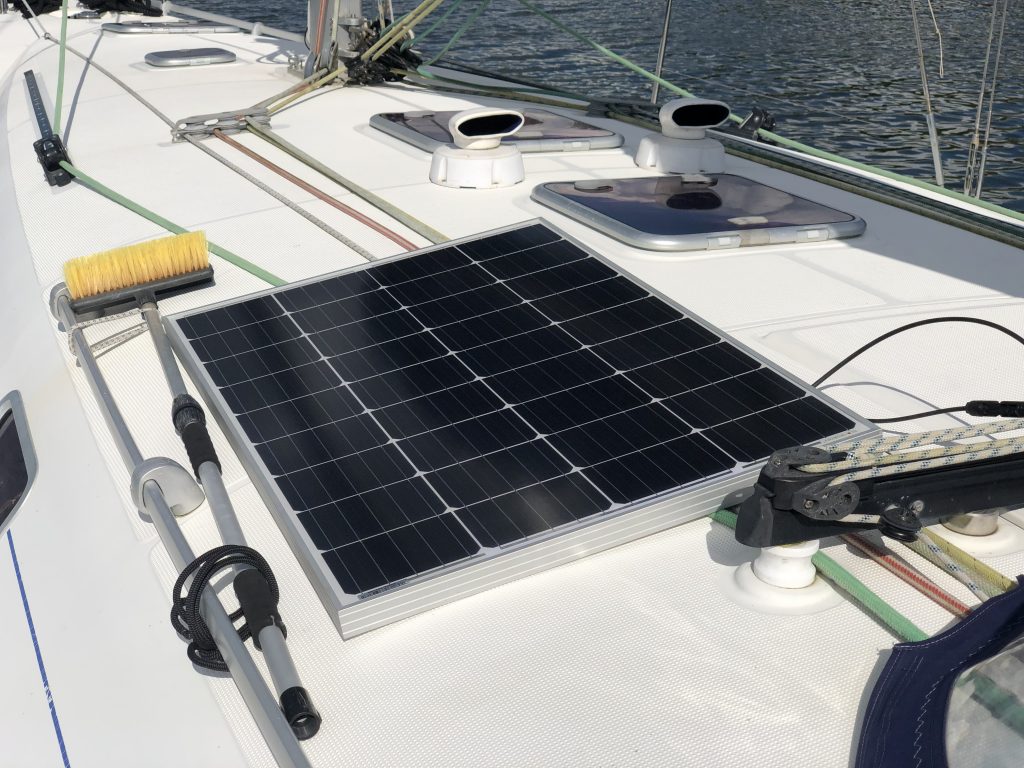
Some time ago I ordered a solar panel, mainly because I realized that it wasn’t a viable option to run the engine every morning to fill up the batteries. For one, I don’t like running fossil fuel engines just to produce power, as it is extremely inefficient, and also because they are noisy and doesn’t really smell that great.
Yesterday it arrived, one day early.
Just because I was really anxious to get it as soon as possible I had set up a mail alert with An Post so that I would know when it was delivered, and in the early afternoon I got a delivery notification! I called the boat yard and they confirmed that it had indeed arrived. I jumped into the dinghy, got into the car and went to pick it up. It isn’t one of those really large panels, it is just 120 watts (W), and sized accordingly. So it was rather easy to get it back to the boat. It is so shiny and beautiful!
So I spent most of the evening last night, trying to figure things out. As you who follow my blog knows, I have already bought pieces of my future energy system and now I was trying to come to terms with how to go forward. I could just take the solar charger and connect it to the current system and be done with it.
But. That. Is. Not. How. I. Operate.

So, I dug through the box of Victron Energy products, pulled out the MPPT solar charger, the battery monitor system and the control display. The latter is obviously an overkill for just one solar panel and a pair of batteries. But it is showing the most fascinating thing that I’m obsessed with right now. I’ll get back to that in a later post.
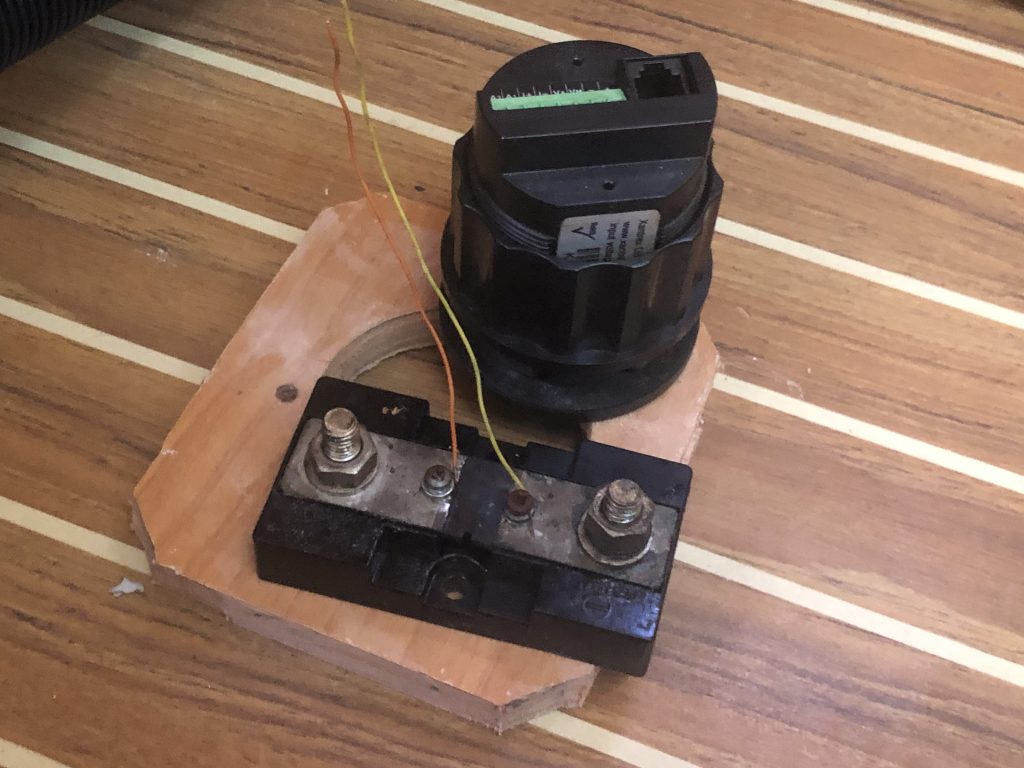
First step: Pull out the old stuff! The shunt, the battery monitor and the cable that connected them didn’t take long to remove, but then the only light I had was flash lights. Well, it wouldn’t stop me for sure.
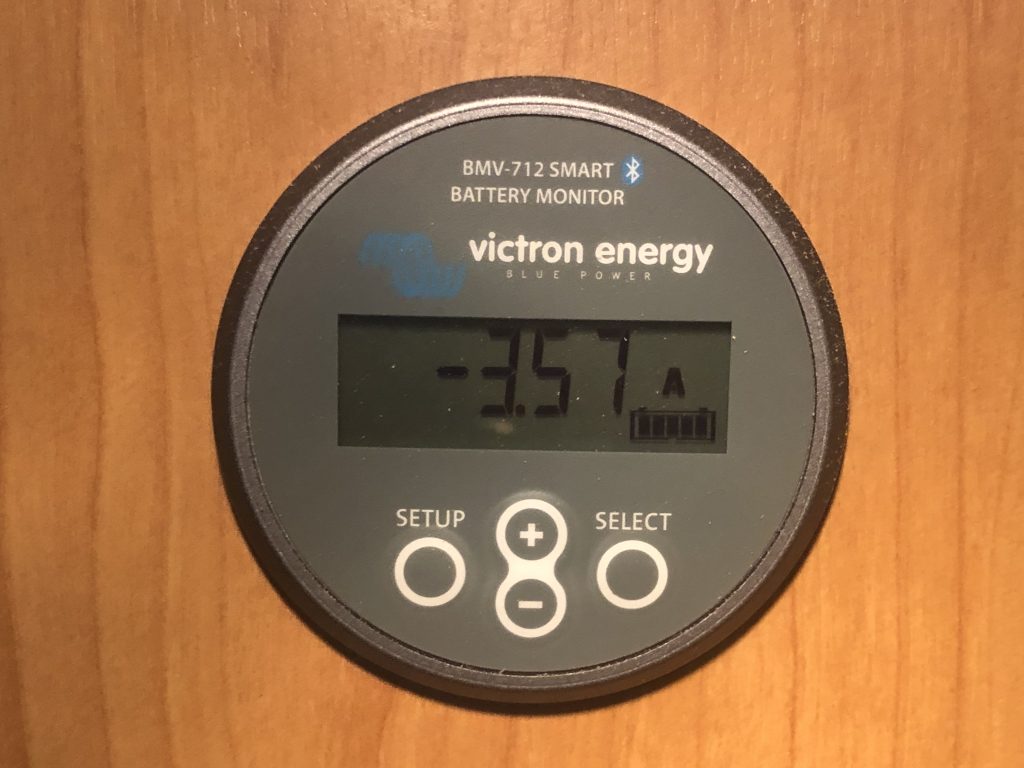
Second step: Put the new shiny stuff in! In general, they are very much plug and play, some settings might have to be done to match the batteries charging profile but after that it is simple to hook things up. If you have all the connectors. Well, on the Victron side it is all in the packages, no problem, but since the shunt can handle larger currents, it is also built for that. Including larger bolts. Which meant that I had to improvise a bit, with the power drill. And it worked, eventually. Min you that this is not a permanent installation, just something that I need at the moment to avoid running my engine until I get the new power system in place.

A shunt, for those that isn’t familiar with how DC systems are set up, is where the system measures the total current going through it. It is a quite cool and simple contraption, in its bare minimum it is a very well defined resistor, usually a few milliohms, which can handle large amounts of current. Then the voltage drop over the resistor is measured. Since it has some minute resistance there is a small, but detectable, voltage over it. And since we know the resistance, we can calculate the current according to Ohms Law: I = U/R. Very nifty! If your head just started to hurt, see it as a speedometer for the power in the cables.
At first I did a funny error, I connected the solar charger directly to the batteries rather than after the shunt, and even if I had some power coming in, it was getting late, and the charger showed that it was putting in that power to the batteries, the battery monitor showed nothing. Such an anti-climax. It took me a couple of minutes to think things through, laugh a bit and redo the connections. And voilá! Power was created from the continuous bombardment of photons from our nearest star, the sun.
Isn’t that cool, or what?!
So, let’s talk a little about power management on a liveaboard sailboat. I’m guessing that some of you think that 120 watts isn’t much for a solar panel, and I agree. But it is like night and day having it. Consider this, normally I use about 40-45 ampere hours (Ah) a day. That roughly translates to 480-540 watt hours (Wh) per day on a 12 volt system.
So installing a 120W, what does it really help? Well, if I consume 540Wh a day, it means that I use the equivalence of 540W in one hour during the day. That means that if the solar panel operates at its maximum of 120W for 4,5 hours it will replenish the batteries to full again.
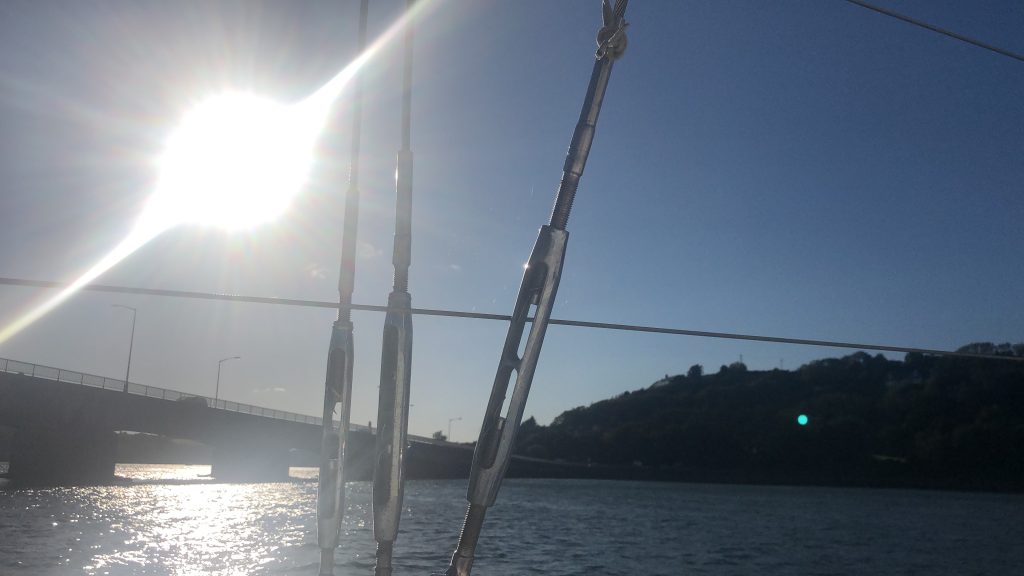
Now, I’m in Ireland and I highly doubt that I will see many days where there is full sun 4,5 hours in a stretch, but over a full day it can actually happen. But the solar panel can also operate at a diminished effect when the sun is clouded. Today, in the morning, it was really gray and to be honest, when I looked out and only saw the sky I couldn’t tell if it was the sky or a fog. It was just super gray. But even so I got about 25-40W of power from the solar panel. Just because it was day. I’m still getting about 70W now, after 8 in the evening, albeit it is still clear blue sky and the sun is warming the boat and charging the batteries. Which isn’t bad at all.
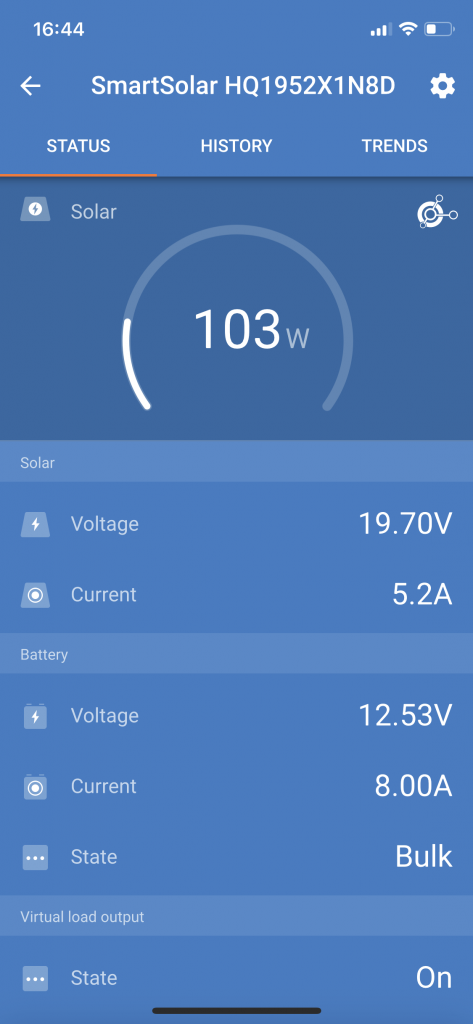
My conclusion is this: Currently the panel absolutely fills my need of electricity, I know it will increase as I get all the rest of the pieces of my power system installed, but I can’t see that I will ever have to be wary about how much power I use on a specific day.
Which is a really nice thought.
Does this mean that it is all a land of milk and honey? No, not really. But it is darn close. The negative parts are of course real estate. on a sailboat every square centimeter is accounted for, so putting up a rigid solar panel is not always easy. This one is small enough to carry around and put it where it makes the most sense by hand at the moment, but the larger ones will have to be permanently affixed.

Which brings me to the next issue with solar panels, and that is shade. I have already talked about the most common kind of shade, clouds, but artificial shade is a much bigger issue with a solar panel. Each panel is comprise of several cells. The one I have has 36 of them. Each cell adds a little voltage to the total of the entire panel, and they are rather sensitive to shade. If the cell is covered only by a fraction you lose that cells power output. But not only that, it can also begin to “steal” current from the other cells, bringing the whole panel down to a trickle. So shade is bad.
So what about costs? Well, yes, it does come with a price tag. The simpler the system the cheaper though, and since I already have plans for some more advanced system my parts that I use costs more than required. But if I would compare the lifetime of the components for solar power, even in such hostile environment as the marine it still makes sense over running the engine several hours every day of the week. It doesn’t produce warm water – yet – but that is the only reason really to start the engine for me at the moment when on a mooring or the hook.
Talking about lifetime, solar panels degrade some over time and if you get solar that will just about fit your needs today you might end up with a system that won’t fill them in the longer run. So it is better to add a little margin now and have a reasonably trouble free installation for a decade or even two, than saving a little money now just to realize more money have to be spent later. Normally after twenty years you should still be able to get at least 80% out of your system compared to the day you bought it.
Upgrades may come sooner than that of course, since needs change and technology evolves. Many times because some ideas of a science fiction writer triggered someone smart enough to figure it out, but mainly because of science, the growing knowledge of everything and hard work by all the people around the world contributing to a world where the fusion power of the sun is the only source of energy we have. We’re all running on nuclear power.
Even the plants.
